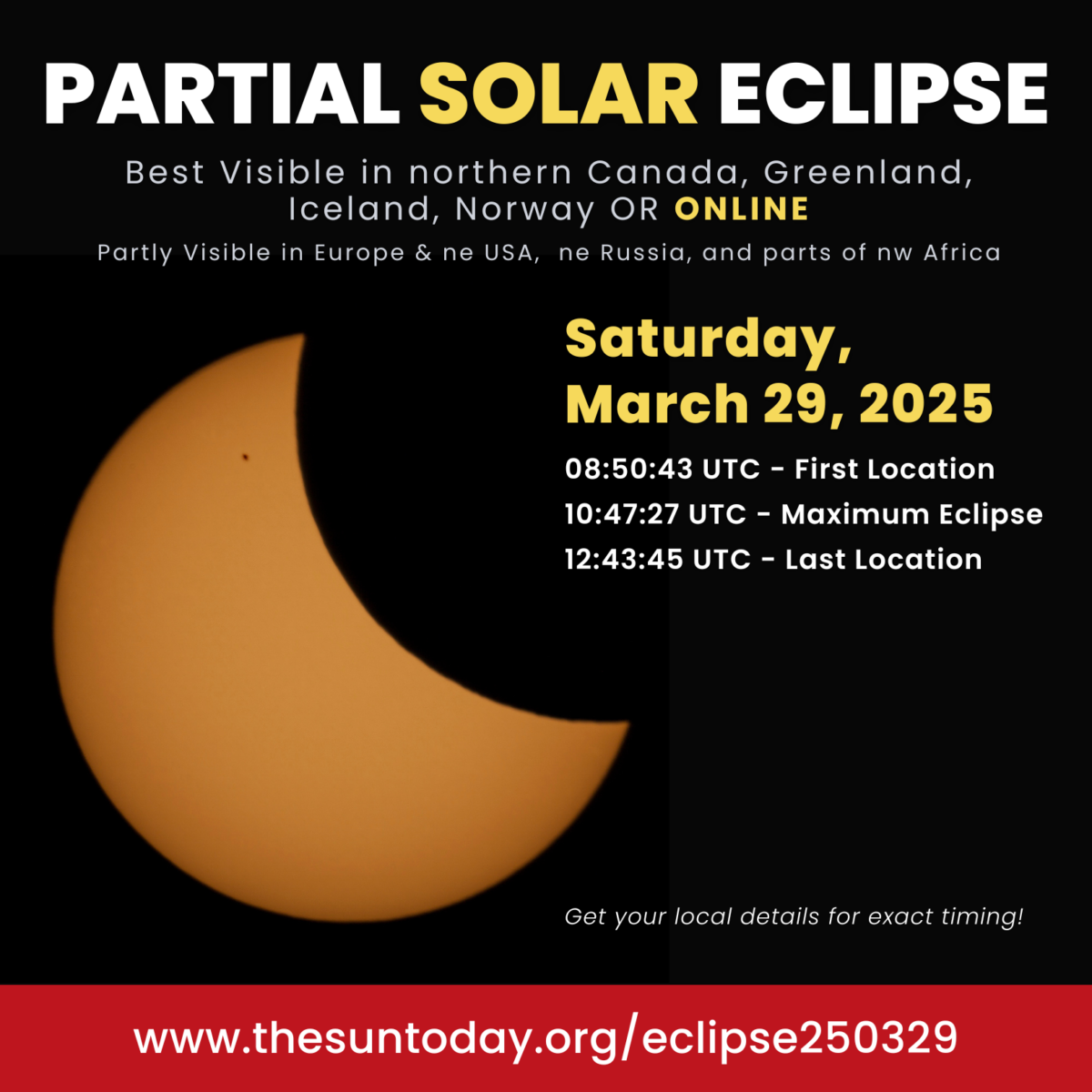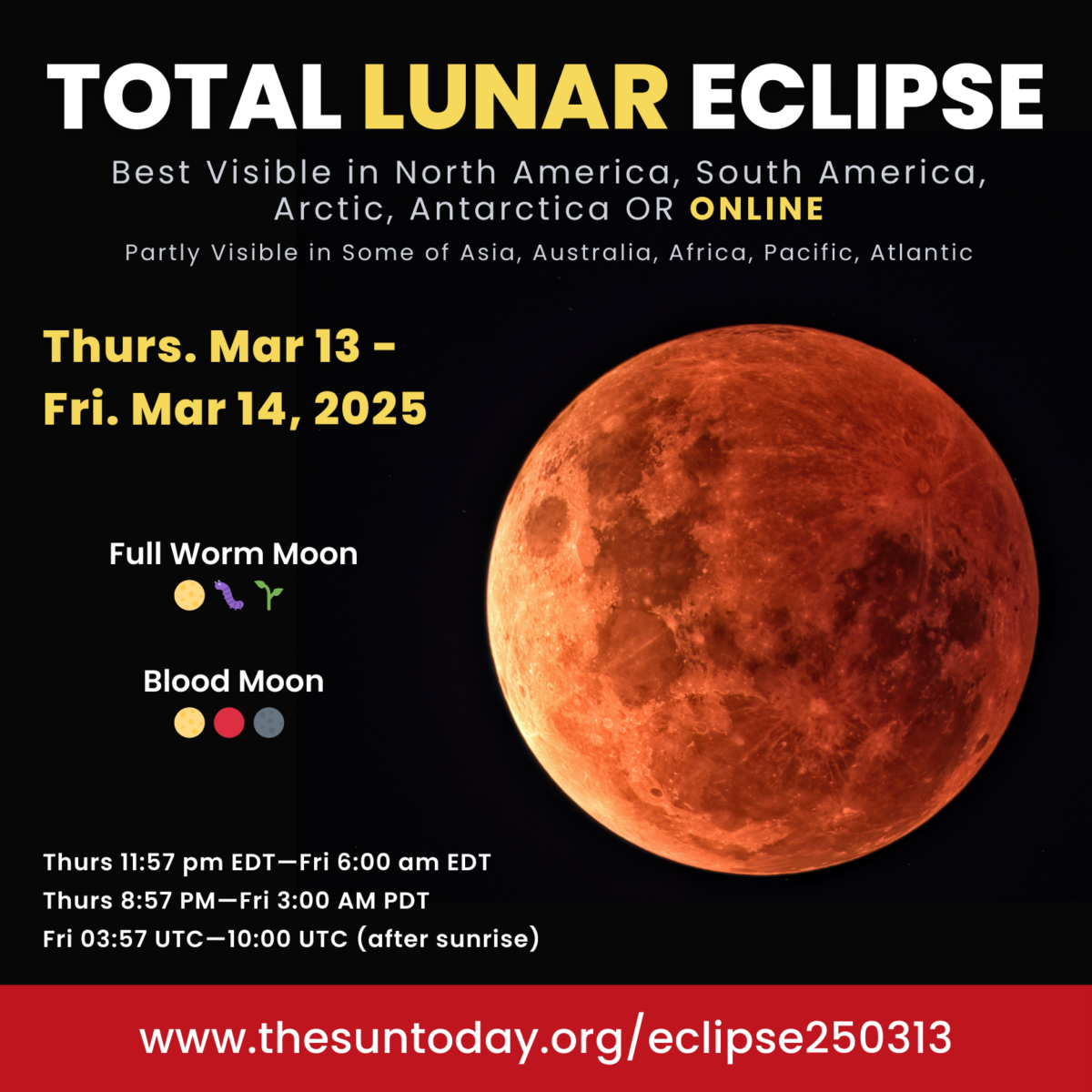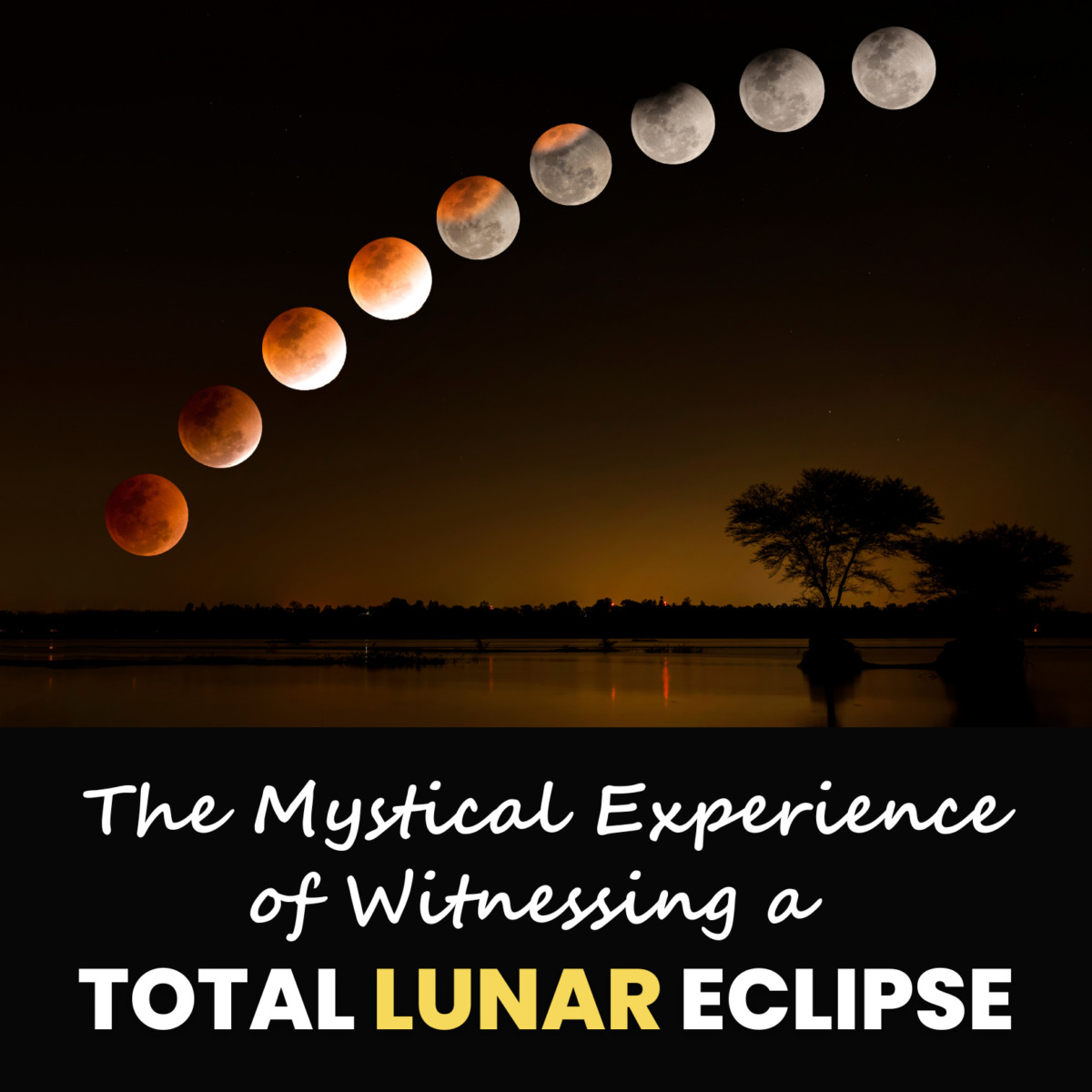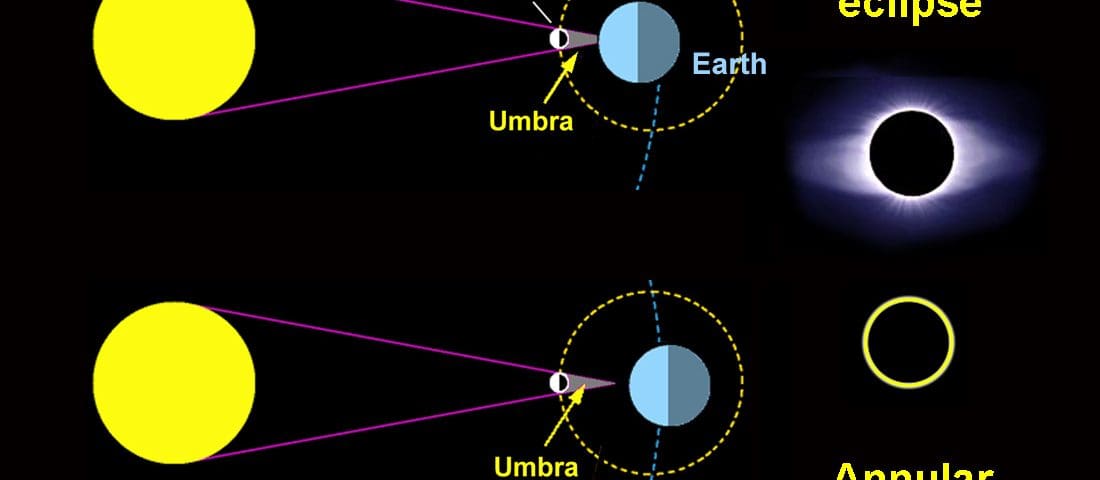
There will be a hybrid solar eclipse on Sunday November 3, 2013. This rare occurrence of an annular and total eclipse is the final eclipse event of 2013.

When the Moon passes directly between the Sun and Earth, its umbra (shadow cone) reaches Earth’s surface and thus completely covers the Sun. The result is a total solar eclipse. But when the Moon is slightly farther from Earth, its disk appears to small to block the entire Sun, and an annular (or ring) eclipse results. credit: Sky & Telescope
Never look at the sun or an eclipse directly!
Eye safety during solar eclipses
What do the different types of eclipses look like?
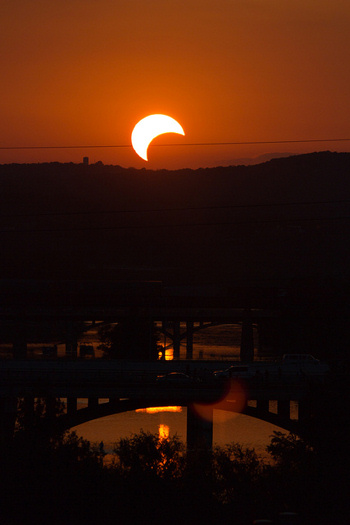
Photo of partial solar eclipse as seen near sunset on May 20, 2012, from Austin, Texas. This time around, eastern North America will see a partial solar eclipse just after sunrise on November 3, 2013. credit: http://www.flickr.com/photos/mrlaugh/7239061514/
Where can you see it?

The eclipse on November 3, 2013, begins as an annular event (far-left end of green line) but quickly becomes a total solar eclipse as the moon’s umbra crosses the Atlantic Ocean and central Africa. credit:
Sky & Telescope illustration / source: F. Espenak
The hybrid eclipse starts as an annular eclipse at a point in the Atlantic Ocean about 600 miles (1,000 km) east of Florida, USA. A lucky observer will have a brief glimpse of an annular or ring of fire eclipse a few seconds after sunrise. Then the eclipse becomes a total eclipse. The longest period of totality, 99.5 seconds, occurs at about 12:46 UT at a point around 200 miles (330 km) southwest of the Liberian coast. The path of the total eclipse continue across the Atlantic to Africa. It reached land in Gabon. Then it travels east-northeastward through Congo, Democratic Republic of the Congo, Uganda and northern Kenya. It ends in southern Ethiopia and westernmost Somalia at sunset.
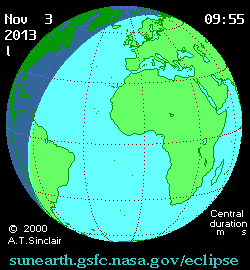
Animation of 2013 November 3 solar eclipse. The large gray circle shows the area of the partial solar eclipse. The very small dark dot in the middle depicts the path of the total solar eclipse.
The partial eclipse will be visible from far-eastern North America, the Caribbean, northern South America, southern Greenland, the Atlantic Ocean, southern Europe, Africa, Madagascar and the Middle East.
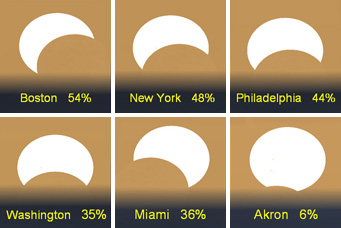
The Eastern Seaboard can see a partial solar eclipse at sunrise on November 3, 2013. Percentages show fraction of Sun’s area covered by the Moon. credit:
Sky & Telescope illustration / source: Stellarium
When can you see it?
(Converting UT or Universal Time to your local time)
Eclipse times (courtesy Earth Sky):
NOTE: This eclipse happens early on Sunday, according to U.S. clocks! For those in the U.S., Daylight Saving Time ends November 3 at 2 a.m. local time on your clock. Remember to fall back and set your clocks back by one hour.
Canada:
Montreal, Quebec
Sunrise: 6:35 a.m. EST
Partial eclipse ends: 7:12 a.m. EST
United States:
New York City, NY
Sunrise: 6:29 a.m. EST
Partial eclipse ends: 7:11 a.m. EST
Raleigh, North Carolina
Sunrise: 6:39 a.m. EST
Partial eclipse ends: 7:08 a.m. EST
Miami, Florida
Sunrise: 6:31 a.m. EST
Partial eclipse ends: 7:02 a.m. EST
Caribbean:
Havana, Cuba
Sunrise: 6:34 a.m. EST
Partial eclipse ends: 7:00 a.m. EST
South America:
Cartagena, Colombia
Sunrise: 5:52 a.m. local time
Partial eclipse ends: 6:52 a.m. local time
Europe, Africa and the Middle East see solar eclipse in afternoon hours November 3.The western portions of Europe and Africa will see the greatest eclipse around noon or early afternoon. For far-eastern Africa, Madagascar and the Middle East, the eclipse will take place in the late afternoon or close to sunset. Remember to use eye protection!
Local eclipse times:
Madrid, Spain
Partial eclipse begins: 1:00 p.m. local time
Greatest eclipse: 1:35 p.m. local time
Partial eclipse ends: 2:10 p.m. local time
Algiers, Algeria
Partial eclipse begins: 1:15 p.m. local time
Greatest eclipse: 1:56 p.m. local time
Partial eclipse ends: 2:36 p.m. local time
Jerusalem, Israel
Partial eclipse begins: 3:12 p.m. local time
Greatest eclipse: 4:00 p.m. local time
Partial eclipse ends: 4:43 p.m. local time
Can you still enjoy it even if you can’t observe it in person?
There will be a lot of great imagery and video afterwards but you can still follow the eclipse online even if you can see it in person with Slooh Community Observatory. Online coverage begins at 1045 UTC (6:45 a.m. EST) on November 3.





